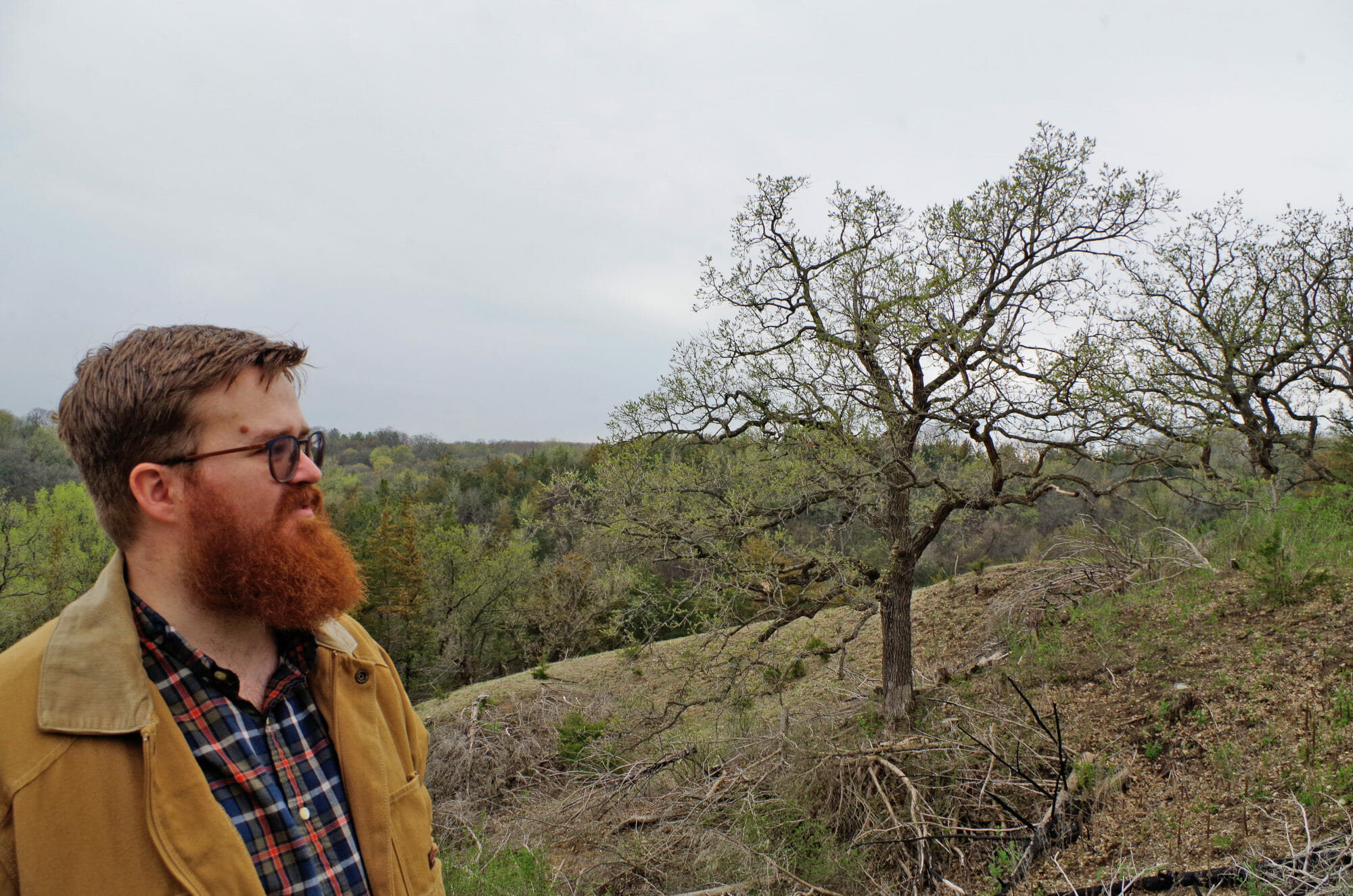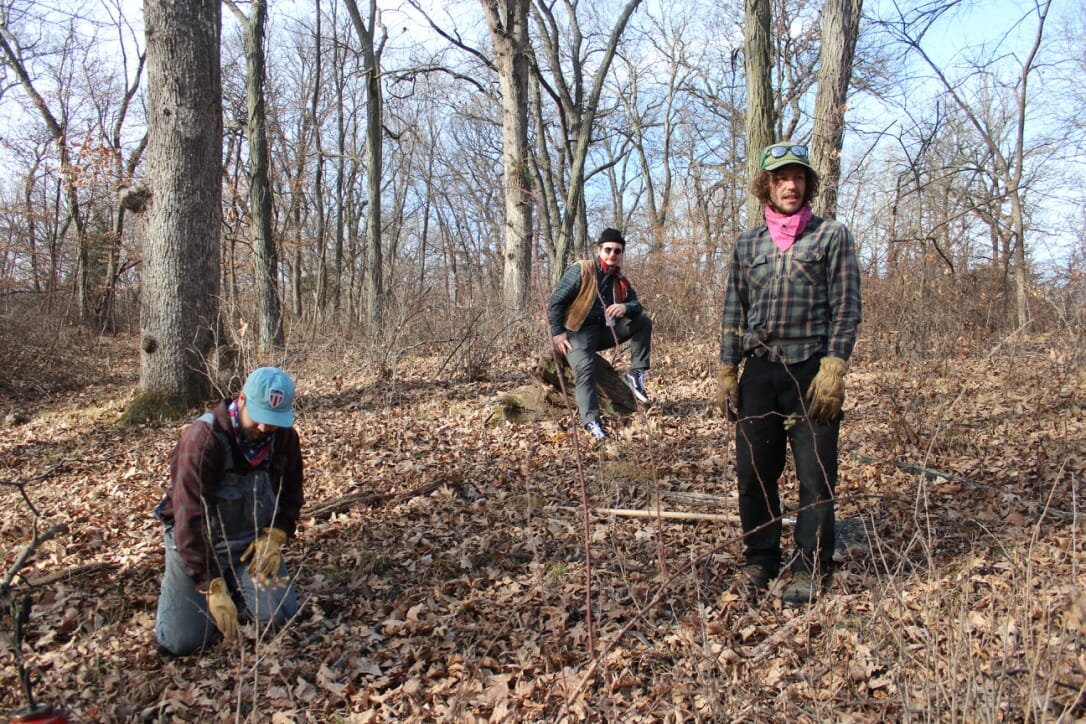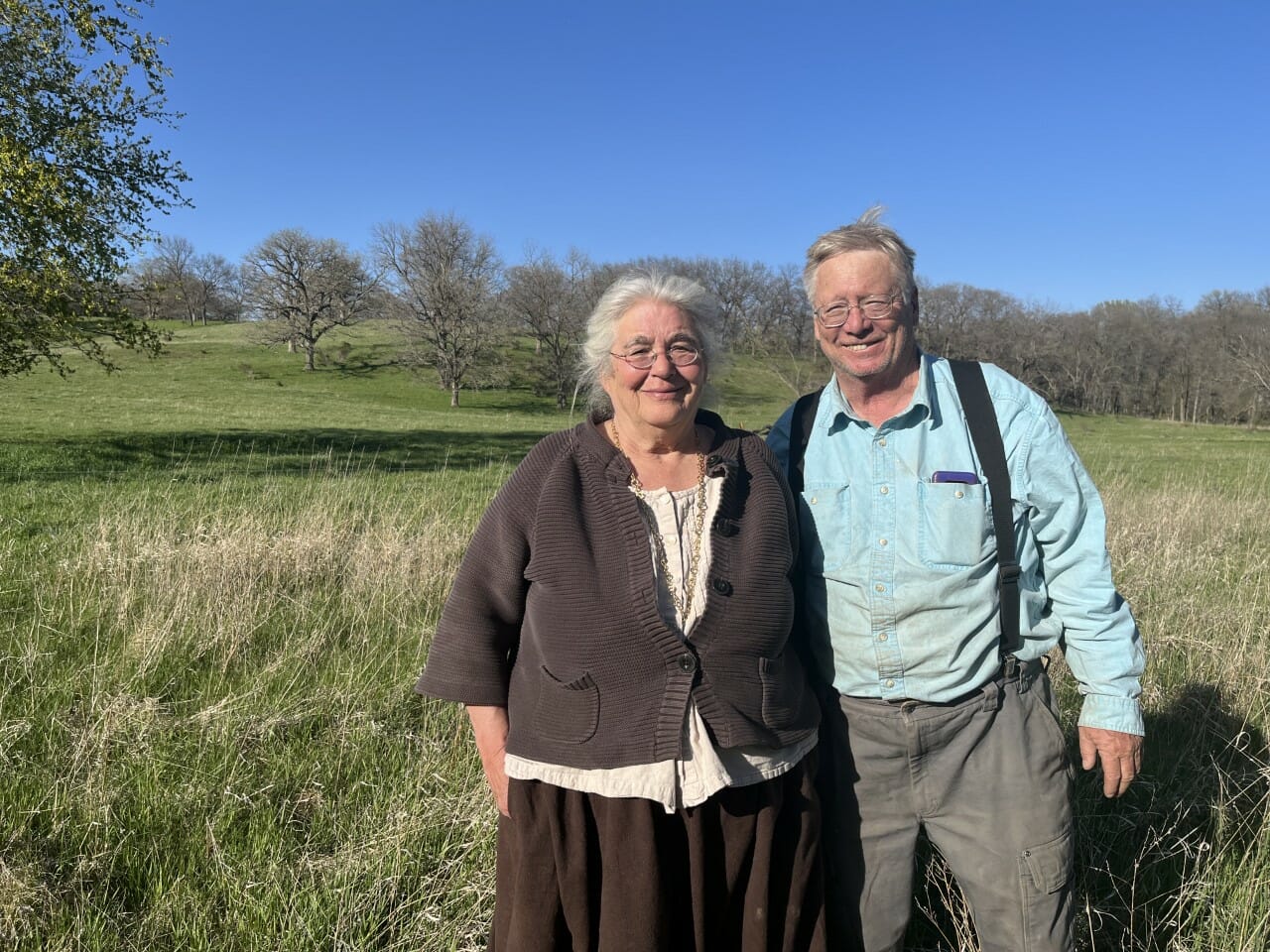In the Shade of Giants
There is an oak at my family’s century farm outside of Belle Plaine, Minnesota, that stands like a monument on the crest of a bluff overlooking the valley below.

The author, Amos Johnson, on his family’s farm near Belle Plaine, Minnesota.
On its face the initials “EM+CE” are carved. Etched in the living wood, the mark is an echo from the past. Shaded by the oak’s great boughs, it tells of someone long ago who, spurred perhaps by a burst of joy or an ardor in their heart, sought to preserve the spirit of the moment. That wood-etched memory of love on a summer’s day is tied inexorably to the solidity of this tree and the legacy of the land.
I came upon the carving as I worked clearing cedars that had grown as a dense thicket, impenetrable in places and crowding out the oak. What had once been open oak savanna was now a dark monoculture of cedars, the soil beneath them bare because no light could reach it. Sharp, grasping branches tried to scrape and claw as I cut through them, slowly making my way to the oak, whose crown was on the cusp of being subsumed in the sea of cedars.
I’d taken on the job of restoration three years ago with equal parts enthusiasm and naiveté. I had recently learned what oak savanna was, and that our farm held some of the last vestiges of what had been a vast ecosystem covering 50 million acres of the Midwest – and up to 10% of Minnesota. A landscape of tree-dappled grassland, oak savanna occupies a liminal space between forest and prairie. It’s a terrain of giants – robust bur, white, red and other oak species – with sprawling limbs presiding over a carpet of grasses, forbs and other plants. Tree cover can range anywhere from 5% to 50%, and the confluence of habitats has resulted in immense species diversity – more than in prairie or woodlands alone.
This unique ecosystem sprang up in the wake of melting glaciers and was then shaped for millennia by grazing and fire, often intentionally set by Native Americans who actively managed the landscape for hunting and other benefits.
Following the arrival of European settlers, however, this fragile system quickly succumbed to the agrarian vision of the newcomers, who plowed the prairie for agriculture, built their homes under the shady groves, suppressed fires and removed trees deemed unnecessary. Surviving remnants largely exist in marginal land that was set aside for pasture. Today, only about 30,000 acres of oak savanna remain in the Midwest.
“Nature Is a Decision Now”
Over 200 miles from my family farm, I was walking land near Boone, Iowa, that had been owned by Andrew Montgomery’s family for generations. It was early in spring, and the grey ironwood trees clung resolutely to their bright orange leaves of last season, gently filling the air with raspy whispers while the bare branches of oaks clattered in the breeze. Omar de Kok-Mercado, Andrew’s long-time friend who worked then for the Savanna Institute, joined us to teach me more about what savannas can look like as part of today’s agricultural landscape. He and Andrew have been working together for the past decade to transform the land with fire – though the vision for the land’s future is an ongoing discussion.

Omar de Kok-Mercado (left), Armin Mesinovic (center) and Andrew Montgomery (right) on Andrew’s land.
Originally, Andrew wanted to return his family land to a pre-settlement ecosystem, as wild as possible. Like me, he had a vendetta against invasive species. But over time, his animosity has tempered. Now, rather than trying to return to a specific moment in time, he views the project more as a goal of abundance. “I’m interested in species diversity,” Andrew says. “If the invasives are detrimental to that, then that’s where the line gets drawn.”
I used to share a similar vague vision of returning my family land to a pre-settlement state. But as I’ve learned more, I’ve realized that’s an unachievable goal. Restoration is not about erasing all traces of the present back to a mythical past “natural” state. As I keep reminding myself, nature has never been static. What the land is now derives from what it once was. And what we do now determines what it will become. The best I can do with my remnant oak savanna is try to mimic those historical conditions by rotationally grazing livestock, reintroducing fire and restoring species.
Omar agrees that studying the historical record of the land is a good place to start. But he urges me to not be limited by that as I imagine the future of my family land. Humans are – and always have been – so integral to shaping our environment that, as Omar says, “nature is a decision now.”
“I don’t think about it as restoration back to a specific point in time. I think of it as reconstructing to what our objectives for the space are.”
– Omar de Kok-Mercado
Opening Space for Light
Inherent to any act of restoration is time, energy and money. As Omar watches his dogs race through the melting snow, he shares an insight the work has taught him over the years. “You can get to your destination really fast, or over a long period of time,” he says. “They both need the same amount of work. One is just all at once and the other is spread out. It’s a lot more pleasant to go slow and do it by hand, or with animals or fire, than it is to bulldoze the landscape.”
Logistics limit Andrew to using only fire in his work. It’s been effective and enjoyable but he concedes that progress is slow. In his 10 years of prescribed burning, large swaths remain untouched. But where he’s been able to focus, the results are encouraging.
Liz Garst and Darwin Pierce of Coon Rapids, Iowa, use prescribed burning on their pastureland but also rotationally graze cattle to open up savanna and encourage biodiversity. Over the last 40 years, they have seen tremendous results. Studies show that when managed burning and grazing are paired together, the results exceed those of grazing or fire alone. Darwin echoes Omar in viewing land management as subjective and guided by your goals. He and Liz originally managed the land to benefit the cattle. Now, however, their priority is managing the cattle to benefit the land.
The cattle are integral to mimicking the area’s ecological past. But Liz has a second reason for keeping them in the pasture: economic. To be effective and sustainable long-term, restoration needs money to fund the work. She sees potential for farmers to benefit economically from restoring the landscape. “Fundamentally, many forests in Iowa are overgrown savanna,” Liz says. “If we can thin the number of trees and get sunshine to ground, there is more grass. That’s great because if you have cows you can see more profit off your land.”
A Signature on the Land
By the end of the summer, I’d cleared the cedars away in Belle Plaine, opening the great oaken cathedral of canopy to the unimpeded sunlight and valley breezes. The fresh breath of wind stirred the branches, letting light once again illuminate the letters EM+CE. Cutting down the cedars was the first and most dramatic step. Soon, following Andrew’s advice, I’ll burn the explosion of growth that sprouts in the newly freed patches of light. When I move back and take over the farm, I’ll heed Liz and add livestock to graze and help offset the ongoing cost of conservation maintenance.
Why do we spend our lives in the Sisyphean struggle of restoration? In my conversations with Andrew, Omar, Liz and Darwin, I realized that it’s more than just affinity for savanna that drives us to do this work. It’s the knowledge that, for a short spell of time, we are stewarding this little spot on Earth. In tending the grasses, trees and animals we invite to return, we are connected to the lives of everyone who came before us – human and more-than-human, to use Robin Wall Kimmerer’s phrase. We have a moment to do what we can, and then we pass it on to the next caretaker. We focus both on what is in front of us now and, as Hamlet put it, on “what dreams may come.”
Aldo Leopold writes in his essay “Axe-in-Hand” that “a conservationist is one who is humbly aware that with each stroke [of his axe] he is writing his signature on the face of his land.” My initials aren’t carved into a tree, but my legacy will be tied to these oaks.

